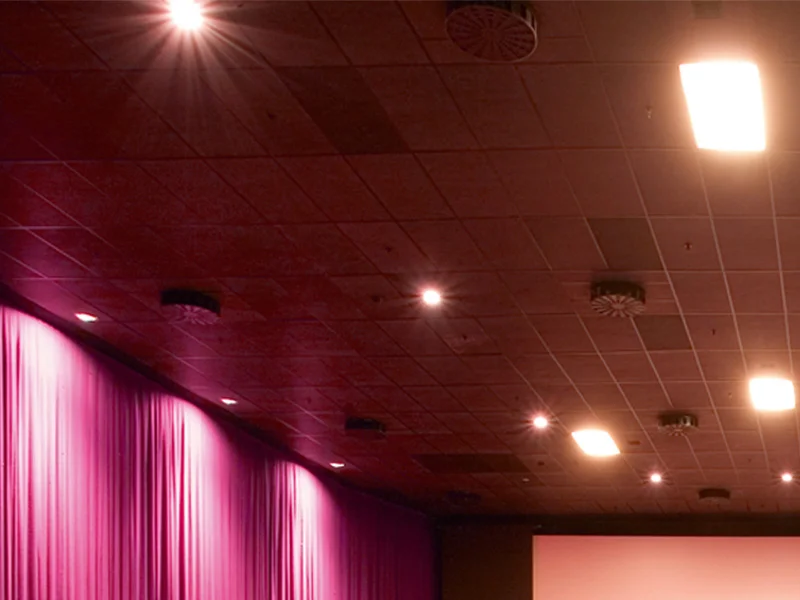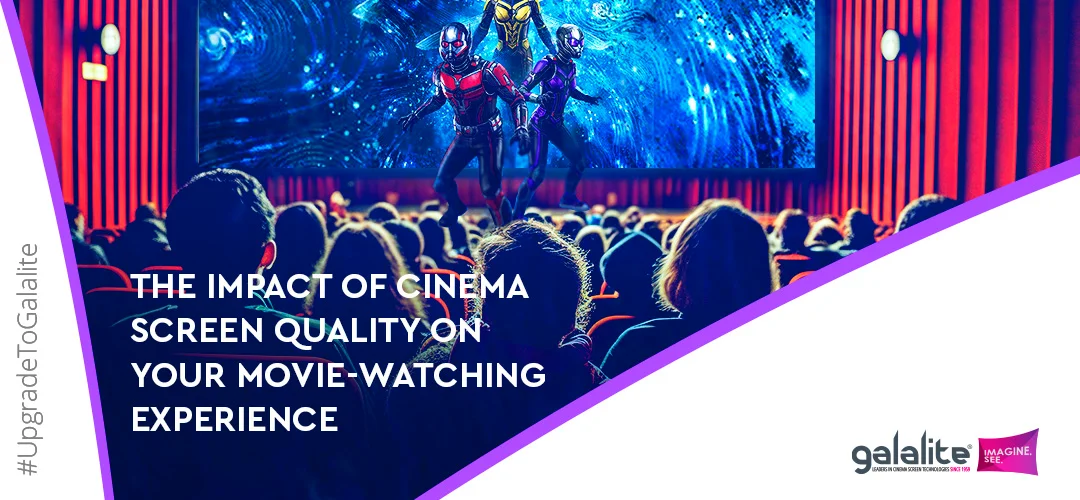
Going to the movies should be an experience from start to finish. When it comes to movie theater lighting, there are a few considerations cinema owners must keep in mind to ensure a pleasant movie-going experience for their patrons. Here are 5 tips for movie theater lighting that are must-know for a successful outcome.
- Create ambient lighting.
Adding ambient lighting is crucial to this setting. When eyes are adjusting to the lower light levels when first entering the theater, ambient light is the easiest for eyes to adjust to without issues. It also helps with after the movie when eyes need to adjust from staring at a brightly lit screen. Ambient lighting should be soft with lower lumen outputs than typical lighting. The color can also play a role in this area of movie theater lighting with most theaters opting for bluish lights or yellow toned lights.
- Use lighting in coves on the ceiling.
If the theater has a cove in the ceiling or raised molding, this could be a great place to position some additional lighting. This lighting area can add ambiance while also serving to provide light for people to find their seats during previews. A good tip is to have this area of lighting on a dimmer or timer so the light level can be adjusted once the movie starts and then brought back up when the movie ends.
- Install lights for safety first, ambiance second.
Lighting inside a movie theater should be about safety first and appearances second. If the theater is poorly lit, it can lead to accidents and injuries. Considerations should be given to all high traffic aspects of this location such as the stairs, seats, and exits. The stairs should have runner lights that run along the length of the stairs with additional step lights placed on each step. The seats should also have backlighting underneath to provide a better view. The exits should be clearly marked with emergency exit signs for the safety of patrons.
- Focus on uplight with wall sconces.
Since movie theater lighting should be gentle on the eyes, you want to avoid fixtures that provide too much direct light for the most part. With wall sconces, you get lighting that won’t send the light spread downward completely. With more uplight or a healthy mix of both up and downlight cast, you can protect the eyes of patrons. Overhead lights tend to get the best light spread which can be too direct in most theaters.
- Mix different lighting levels.
While ambient lighting along with safety measure lighting solutions, is the key to lighting a movie theater, this doesn’t mean those are the only types of lighting needed. Movie theaters should have overhead lights that are used during cleaning to provide adequate illumination for staff, but these lights shouldn’t be on during the patron’s movie-going experience since it’s too jarring on the eyes to go from dimly lit to super bright in a matter of minutes. It’s also a good idea to ease moviegoers into the lower lighting levels in stages. While a bright lobby area is an expectation, the hallways leading to the various theaters should be dimmer than the lobby with the entrance to the individual theater being even dimmer to make the transition easier.
Related articles



